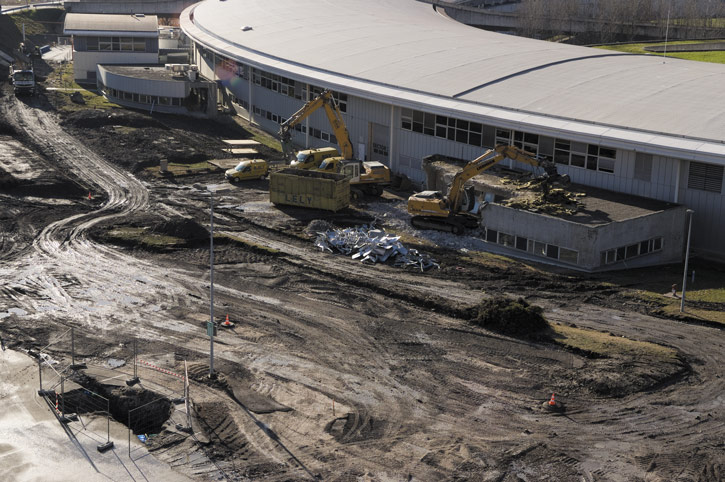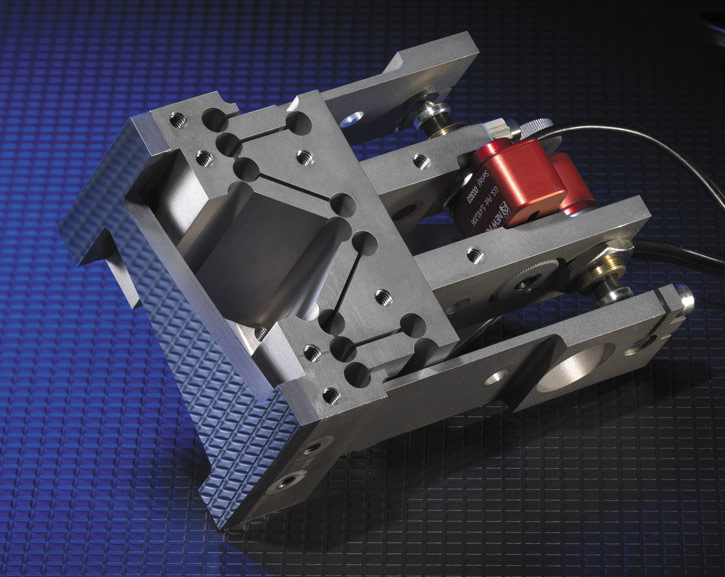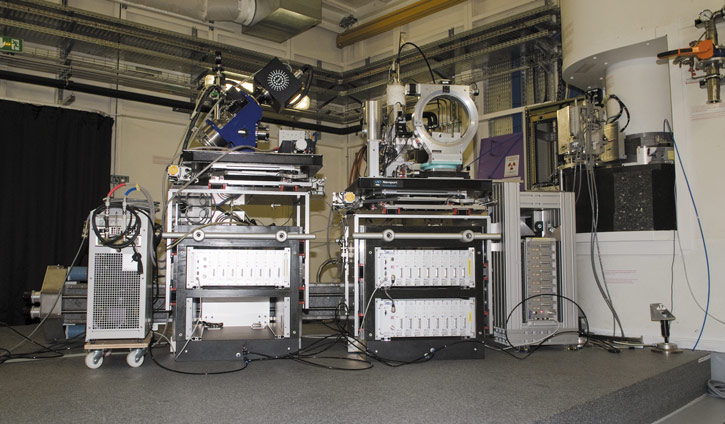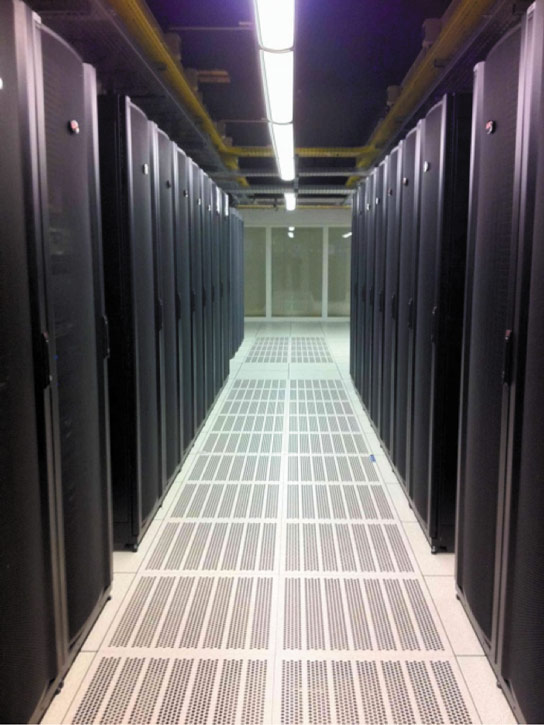- Home
- Users & Science
- Scientific Documentation
- ESRF Highlights
- ESRF Highlights 2011
- Status of the Upgrade Programme
Status of the Upgrade Programme
With the start of the long shutdown we have now reached the peak activity in the Upgrade Programme. All divisions of the ESRF are involved in heavy works bringing about the most profound changes since the inauguration of the ESRF. The Technical Infrastructure Division is realising the EX2 project while gearing up for the site infrastructure works for the CPER programme running in parallel. The Accelerator and Source Division takes full advantage of the long shutdown to install major components for the upgrade of the accelerator and source complex. Finally, the Experiments Division and the Instrumentation Services and Development Division together are taking the opportunity to deeply upgrade, refurbish, and modify a large number of beamlines to realise improved performance for our users.
New Buildings
The project for the extension of the experimental hall has progressed according to schedule. Following the approval of the work contracts by an exceptional Administrative and Finance Committee and Council meeting at the end of July 2011, works were started in September with many preparatory actions to clear and prepare the areas in front of the current experimental hall on both sides of the Central Building. This phase included the installation of the construction headquarters, the displacement of underground networks, the move of the Central Building heat exchangers and one of the big liquid nitrogen tanks, the move of several bicycle sheds, and last but not least the preparatory works for the demolition of three sector buildings.
The extended winter shutdown started as planned on 5 December 2011 and allowed the demolition of the sector buildings (Figure 1) and the heavy earth works to start. By the end of January 2012, some 20 000 m3 will have to be moved to the temporary storage area in front of the Central Building. During the extended shutdown, most of the disruptive works will be done while minimising the impact and maintaining the best possible working conditions in the Experimental Hall, because this period of time is also of crucial importance for many other activities linked to the construction of the upgrade beamlines. Notably the work on the fluids and electricity networks will unavoidably result in cut-offs which will be carefully planned and communicated to the staff.
|
Fig. 1: Demolition of sector buildings. |
The current planning foresees the delivery of the ID16 building in September 2012, the Chartreuse experimental hall and the Lab. and Office Building in March 2013, and the Belledonne experimental hall in May 2013. By then 12 000 m2 of new buildings, and in particular more than 4 000 m2 of high quality slab for the Upgrade beamlines, will become available.
The State/Region funded project (CPER – Contrat Plan Etat Region) has also made significant progress. The construction of the Science Building (under the authority of the ILL) will start in March/April 2012 with an expected delivery of the building in September 2013. The Science Building will host laboratories and services common to the ILL and ESRF: the Theory Group, library, PSCM, chemistry lab., material science lab., and the characterisation & technology platform.
The project funded by the CPER to create a new site entrance on the Avenue des Martyrs and to upgrade the Common Building restaurant has entered into the technical specification phase to prepare the documents for the tender exercise. The building contracts will be placed this summer and delivery of the new premises is expected to take place at the end of 2013.
Upgrade of the Source
In 2011 the upgrade of the Accelerator System went on mostly during the planned shutdowns without interfering with the User programme.
During the winter 2010-2011 shutdown, the installation of a new set of skew quadruple correctors, together with improved algorithms, allowed the vertical emittance to be further reduced and stabilised at around 4 pm. Work on the new beam position feedback continued with the installation of the processors and fast network. The first tests were performed during fall and confirmed an excellent performance. The new system will replace the old one in the first run of 2012.
At the end of 2011, 4 straight sections were lengthened to 6 m, with ID24 being the 1st section to accommodate 4 undulator carriages. Preparatory work for the first 7 m long straight section on ID23 also started with the delivery and magnetic measurement of the new quadrupole magnets.
The upgrade of the RF system reached a major milestone with the delivery of the solid state amplifiers that will replace the klystron on the Booster. The tests on load were successfully completed in December and the connection to the Booster RF cavities will be done at the beginning of 2012. Simultaneously, two prototypes of new HOM-free RF cavities were delivered, and the first cavity was installed in the storage ring. It behaved perfectly in passive mode during User runs and was successfully tested in accelerating mode during machine dedicated time.
Renewal of Beamlines
2011 saw the first reduction in the number of beamlines operated by the ESRF owing to a 6% budget cut and the construction of new beamlines. The magnetic scattering programme on beamline ID20 made way for UPBL6, a beamline employing high resolution spectroscopy for the study of electronic excitations, and the spectroscopy beamline ID32 was closed at the end of the year to prepare the ground for the moving of beamline ID08 to its new location within the UPBL7 project.
|
Fig. 2: Compact multilayer KB mirror for beamline ID22NI. |
Many improvements have been achieved not only on beamlines already under construction in the frame of the Upgrade Programme (Figure 2). Equal importance is placed on optical components, sample manipulation and environment systems, as well as on detectors with vastly improved performance. The first upgraded beamlines have been commissioned and inaugurated. Continuous investments are also being made on many other beamlines. The upgrade and refurbishment projects on beamlines are being realised in close collaboration between the Instrumentation Services and Development Division and the Experiments Division. The following lists the main projects tackled in 2011.
- UPBL4: Procurement of most of the optical components.
- UPBL6: Installation of the beamline infrastructure; design of the two spectrometers (high resolution IXS spectrometers and large solid angle IXS spectrometer); procurement of the optical components.
- UPBL7: Preparation for move of ID08 to ID32; design studies for optical components and the RIXS spectrometer.
- UPBL9A: Completion of the TDR; design works for beamline components.
- UPBL10: Completion of ID30A infrastructure; Design and procurement of optical and endstation components; Commissioning of a new sample robot; Launch of an R&D project for the next generation of sample robotics; complete installation of BM29 optics.
- UPBL11: Installation of beamline components on ID24-S and ID24-L branch lines; commissioning of ID24-S branch (Figure 3); start of user operation on BM23 (March 2011).
- ID10 refurbishment: design of beamline components for merged ID10A/B/C beamline complex; start of in-depth refurbishment during long shutdown.
- ID19 refurbishment: design of beamline components; start of in-depth refurbishment during long shutdown.
- BM14 refurbishment: Installation of commissioning of new optical elements (channel-cut monochromator; flat mirror; toroidal mirror).
|
Fig. 3: New beamline branch ID24-S. |
The range of new detectors spreads from high performance pixel detectors (Pilatus, Maxipix) to large area flat panel detectors (Perkin Elmer) and ultrafast CMOS cameras (PCO Dimox) for the imaging beamlines, to name only a few. The Instrumentation Services and Development Division is deeply involved not only in in-house detector programmes (Maxipix, FReLoN), but also in new detector developments coordinated between facilities on the European level. Generic ESRF developments such as IcePAP for motion control, LIMA as an interface for 2D detector integration, and TANGO devices for both the accelerator complex and beamline instruments have been further developed and installed. To handle the enormous amount of user data produced by this equipment, a new data centre (Figure 4) has been installed hosting new data storage systems, high performance computers for online data analysis, and long-term data archival on tapes.
|
Fig. 4: New data centre in the central building. |
R. Dimper, L. Farvacque, H. Reichert and J. Susini







